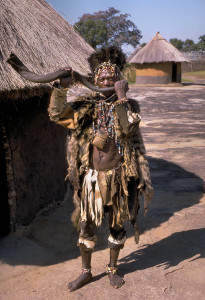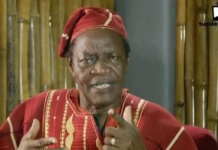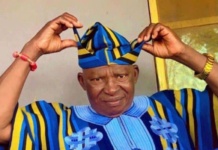The Shona tribe is Zimbabwe’s largest indigenous group, their tribal language is also called Shona (Bantu) and their population is around 9 million. They are found in Zimbabwe, Botswana and southern Mozambique in Southern Africa and bordering South Africa. Representing over 80% of the population, the Shona tribe is culturally the most dominate tribe in Zimbabwe. There are five main Shona language groups: Korekore, Zeseru, Manyika, Ndau, and Karanga. The Ndebele largely absorbed the last of these groups when they moved into western Zimbabwe in the 1830s.
Traditionally, Shona people live in isolated settlements, usually consisting of one or more elder men and their extended families. Most decisions are made within the family, although organized political states were recognized as a source of centralized power. A principal chief who inherited his position and power in the same divine manner as a king headed them. He usually lived in a centralized location and was complemented by his court that advised him about most important decisions. The head chief often received substantial payment in the form of tributes from his constituency.
The term Shona did not exist to describe any ethnic grouping before the advent of colonialism. The term Shona originates from the Ndebele ‘abetshona’ meaning ‘those from over there’ and was popularized by use during colonial times.
Otherwise the people now collectively known as the Shona do not belong to one ethnic origin. What the Shona do is share a set of very similar language dialects but not a common ethnic background. While it is true that the builders of Great Zimbabwe have their descendants among today’s Shona people, those not in the know often ignore other tribal groupings not referred to as Shona today but also descendant from the builders of great Zimbabwe. Such a tribe are the Venda who are found in southern Zimbabwe and parts of South Africa.
So referring to the Shona as the oldest tribe, without specifying which particular clan of the Shona you are referring to is wrong. Some of the people now called Shona came into Zimbabwe even after the coming of the Ndebele.
The people that we now consider the Shona because of the name given to this grouping of people have been said to have started carving to express personal feelings and tribal beliefs more than 2000 years ago, during the times of Great Zimbabwe.
The stone sculptures produced by these artists display great individuality of form and content. Every piece is an original and is valued by even the most astute collector. The art is extremely seductive and amazingly beautiful with each stone containing rich colors and textures which invite one to explore and touch visually, emotionally, physically and intellectually. For the most-part, today’s Zimbabwean stone sculptors are self-taught and for this reason, still able to freely express their true artistic feelings. In doing so they create the most amazing pieces of art and give us a freedom of artistic skill has impressed art collectors and dealers world wide.
There is mounting evidence that the presence of Shona sculpture in the 20th century began not in the 1950s as is popularly believed, but as early as the turn of the century and some would say as far back as the times of Great Zimbabwe over 2000 years ago.
The artists that we now see creating in Zimbabwe and South Africa have come a long way from the beginnings of their craft many years ago. We now refer to what was originally called “Shona Sculpture” as Zimbabwean Stone Sculpture. The reason being that to just say the “Shona people” are the only sculptures today would be false. In fact there are many different men and women from all over Africa that have come to Zimbabwe to study from the masters over the last 50 or so years. These talented artists have now become some of the best sculptures in the world and have in fact launched the traditional Shona Sculpture into being the biggest contemporary art movement to ever come out of Africa.
We can debate the origin and outcome of this amazing art until the end of time but one thing we can all agree on is that there is a mysterious, powerful and positive presence in all true Zimbabwean Stone Sculpture that could never be manufactured or replicated. It has to come from long standing traditional beliefs and true artistic expression. For this we are truly grateful to be able to enjoy this wonderful, refreshing work in today’s upside down world.
The Shona believe in two types of spirits. Shave spirits are most often considered to be outside or wandering spirits and vadzimu are ancestor spirits. Shave spirits are connected to populations living outside of Shona territory and may be connected to neighbouring people. These spirits may be either malevolent or benevolent. Bad spirits are associated with witchcraft, while good spirits may inspire individual talents associated with healing, music, or artistic ability. Vadzimu represent all that is ideal and moral about a Shona way of life. They are usually associated with recent ancestors or with more remote culture heroes whose exact genealogy has been forgotten. They serve to protect society, but may withdraw this protection if the Shona moral ideals are not respected
It was in the late 19th century that the peoples of this area speaking several mutually intelligible languages were united under the Shona name. Although known for their stone sculpture, the Shona Tribe of Zimbabwe has a rich artistic heritage, which includes decorative fabric painting using sadza too. Sadza (pronounced sudza) is Maize, a primary basis of their diet. Maize (corn) is ground into a fine meal, which is then cooked with water until it is the consistency of mashed potato. Although eaten plain, sadza is often served with a vegetable or meat sauce to give it flavour. This painting technique uses the sadza instead of wax as a masking between the different paint colours. After painting, the canvas is left to dry in the sun. Finally, the fabric is washed to remove the sadza leaving it with a unique finished appearance. Designs often use traditional geometric patterns mixed with stylized objects from everyday Shona life
Shona artist are well known for their stone sculptures and are typically called “Shona” sculptures because it is the name of the tribe in Zimbabwe that has traditionally created these works of art. The stone carving has been part of the Zimbabwean culture since 1200 AD when Great Zimbabwe, an archaeological masterpiece of their early ancestors, was built.
The re-emergence of this stone carving tradition in the 1950s, the solid forms and beautiful surfaces of Shona sculpture express an extraordinary emotional power”. Today the art form commands worldwide recognition with the world’s most talented carvers being recognized in Zimbabwe
The Shona sculptures are produced from a variety of stones. Serpentine stone, with its considerable range of colours and hardness, is the material most commonly used by the sculptors. Most serpentine stone used was formed over 2.6 billion years ago. Serpentine stone exists in a diversity of colors including black (the hardest and least common), browns, mauves, greens, and yellows. Sometimes sculptures are also made semi-precious stones like “Leopard Rock” and verdite.
Drawing on ancient sculpting traditions they have produced a modern art movement of dignified, exquisite works. Reminiscent of Picasso and Henry Moore, these extraordinary, intense works speak to all humanity











